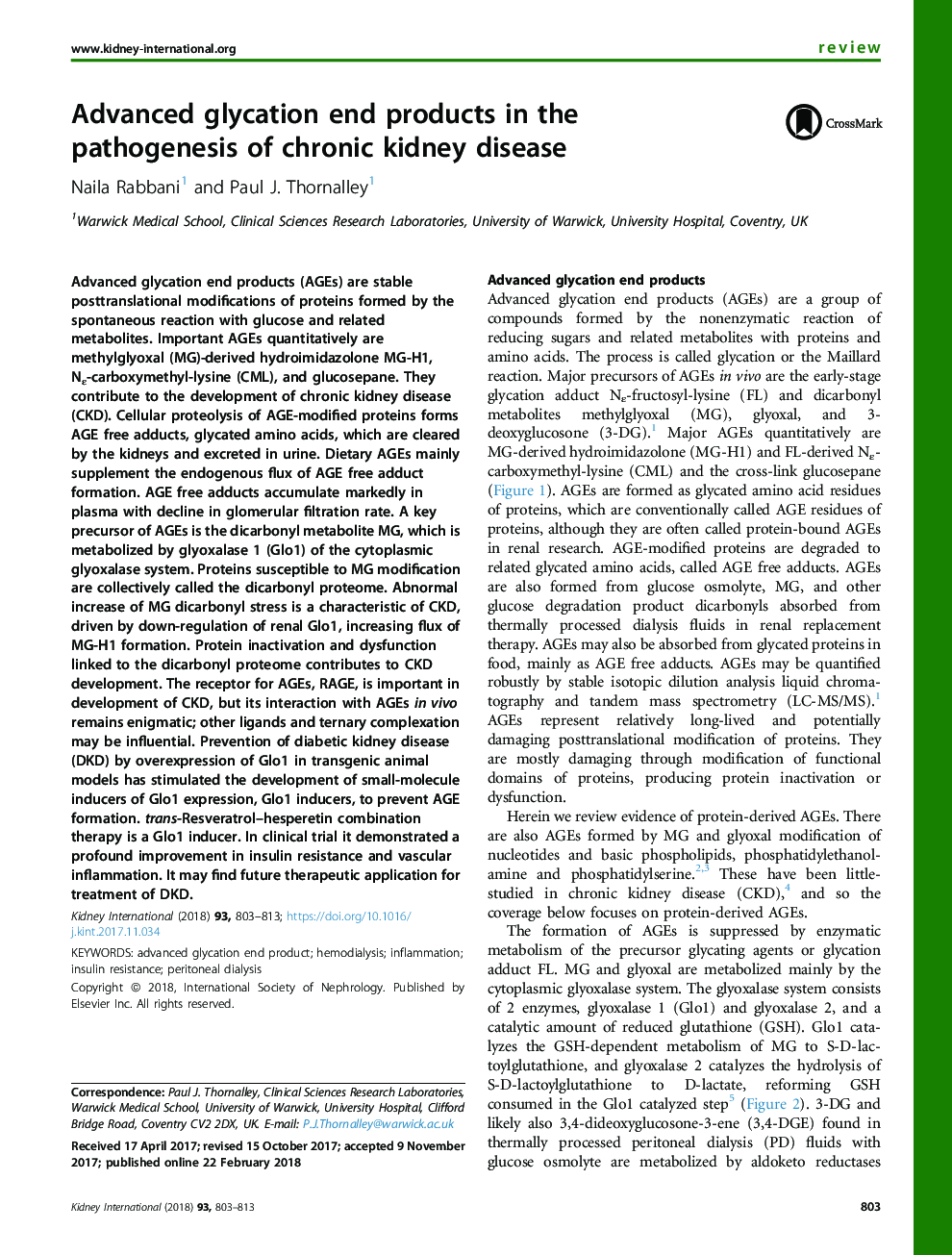| کد مقاله | کد نشریه | سال انتشار | مقاله انگلیسی | نسخه تمام متن |
|---|---|---|---|---|
| 8772763 | 1599140 | 2018 | 11 صفحه PDF | دانلود رایگان |
عنوان انگلیسی مقاله ISI
Advanced glycation end products in the pathogenesis of chronic kidney disease
ترجمه فارسی عنوان
محصولات پیشرفته گلیساسیون در پاتوژنز بیماری مزمن کلیه
دانلود مقاله + سفارش ترجمه
دانلود مقاله ISI انگلیسی
رایگان برای ایرانیان
کلمات کلیدی
محصول نهایی پیشرفته گلیساسیون، همودیالیز، التهاب مقاومت به انسولین، دیالیز صفاقی،
موضوعات مرتبط
علوم پزشکی و سلامت
پزشکی و دندانپزشکی
بیماریهای کلیوی
چکیده انگلیسی
Advanced glycation end products (AGEs) are stable posttranslational modifications of proteins formed by the spontaneous reaction with glucose and related metabolites. Important AGEs quantitatively are methylglyoxal (MG)-derived hydroimidazolone MG-H1, Nε-carboxymethyl-lysine (CML), and glucosepane. They contribute to the development of chronic kidney disease (CKD). Cellular proteolysis of AGE-modified proteins forms AGE free adducts, glycated amino acids, which are cleared by the kidneys and excreted in urine. Dietary AGEs mainly supplement the endogenous flux of AGE free adduct formation. AGE free adducts accumulate markedly in plasma with decline in glomerular filtration rate. A key precursor of AGEs is the dicarbonyl metabolite MG, which is metabolized by glyoxalase 1 (Glo1) of the cytoplasmic glyoxalase system. Proteins susceptible to MG modification are collectively called the dicarbonyl proteome. Abnormal increase of MG dicarbonyl stress is a characteristic of CKD, driven by down-regulation of renal Glo1, increasing flux of MG-H1 formation. Protein inactivation and dysfunction linked to the dicarbonyl proteome contributes to CKD development. The receptor for AGEs, RAGE, is important in development of CKD, but its interaction with AGEs in vivo remains enigmatic; other ligands and ternary complexation may be influential. Prevention of diabetic kidney disease (DKD) by overexpression of Glo1 in transgenic animal models has stimulated the development of small-molecule inducers of Glo1 expression, Glo1 inducers, to prevent AGE formation. trans-Resveratrol-hesperetin combination therapy is a Glo1 inducer. In clinical trial it demonstrated a profound improvement in insulin resistance and vascular inflammation. It may find future therapeutic application for treatment of DKD.
ناشر
Database: Elsevier - ScienceDirect (ساینس دایرکت)
Journal: Kidney International - Volume 93, Issue 4, April 2018, Pages 803-813
Journal: Kidney International - Volume 93, Issue 4, April 2018, Pages 803-813
نویسندگان
Naila Rabbani, Paul J. Thornalley,
